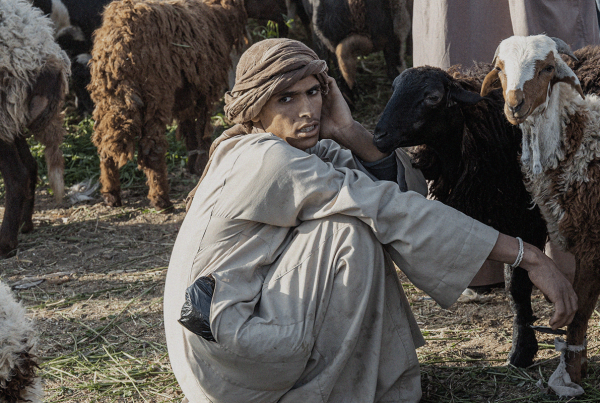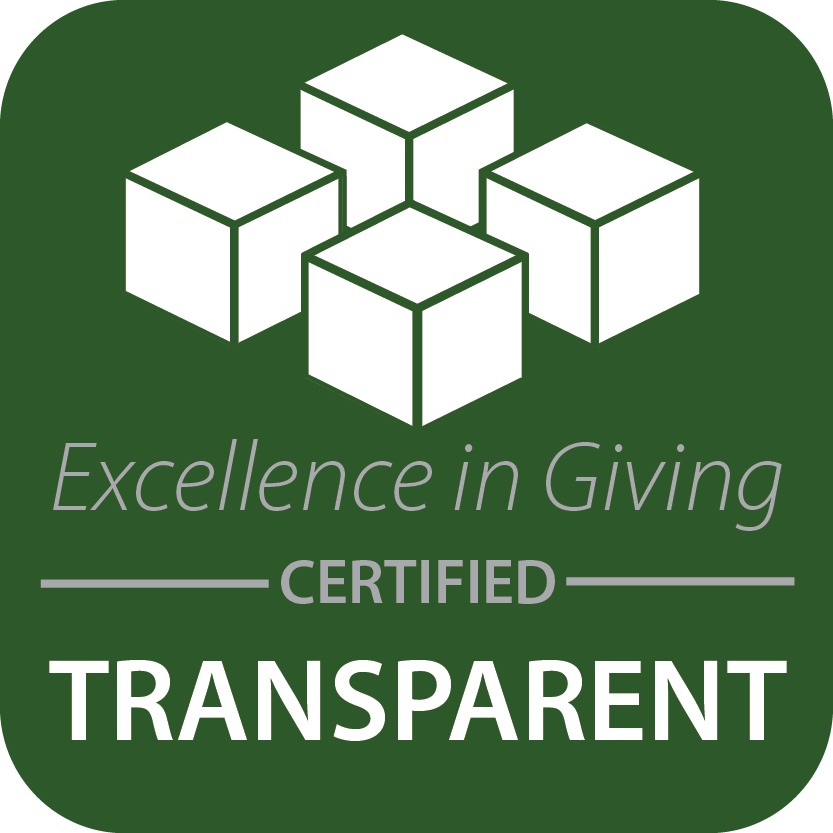Content note: This article discusses multiple kinds of abuse and the physical and mental impacts it can have. Use discretion and care in determining if this is supportive for you to read at this time.
Imagine: you’re working the front desk at an emergency room during the dead hours in the middle of the night. The boredom of the shift is broken up when a young woman comes in, accompanied by a man who looks like he’s at least ten years older than her.
The woman is bleeding from her temple, and she doesn’t look you in the eye while her companion demands she be seen immediately. He says he’s her older brother, but they don’t look at all alike. When you ask her questions, she answers in a whisper, pulling at the hem of her tight crop top.
It’s all a little weird. But you send them back to a room, and within an hour or two, they’re on their way.
This might have been a case of human trafficking.

In the United States, at least 70% of human trafficking survivors access healthcare during their exploitation. This is a natural result of the critical health problems human trafficking survivors experience. Unfortunately, few healthcare providers recognize trafficking when they see it — and many trafficking survivors can’t access care at all.
As a result, human trafficking survivors have urgent physical and mental health needs that have to be addressed. Here is how trafficking harms those who are exploited.

Physical health problems for human trafficking survivors
Any type of human trafficking — sex trafficking, labor trafficking, and forced marriage — can have grave health consequences. One study by Loyola University found that 99% of trafficking survivors had at least one significant health problem as a result of their exploitation. This was closely correlated with the fact that 92% of survivors reported some kind of physical violence during the course of their trafficking.

Some of the commonly reported injuries in trafficking survivors include neurological problems, traumatic brain injuries, gastrointestinal distress, cardiovascular or respiratory illnesses, and dental problems. They might also suffer severe infections due to lacking timely access to care. Some survivors suffer wounds or even lost limbs.
The kinds of health problems that a trafficking survivor endures are closely tied to the kind of exploitation they are subjected to. For example, sex trafficking survivors around the world commonly suffer from sexually transmitted infections and other reproductive health problems. Labor trafficking survivors may suffer worksite injuries. In the Democratic Republic of Congo, children are born with birth defects due to their parents’ exposure to hazardous materials. Trafficked men and boys on fishing boats often experience exhaustion and chronic pain as a result of their brutal working conditions and long hours.
Across all sectors of trafficking, from kids in forced begging to women trafficked in domestic work, malnutrition is an incredibly common health problem. Traffickers often use food as a method of reward and punishment, or simply refuse to provide adequate nourishment for those they are exploiting.
In one study of trafficking survivors in Los Angeles, a woman said, “I [only] drink tea, because most of the time, she never buy even bread for us— like when it’s almost expired, that’s when they bring the bread to us. I remember the last time… she took like more than two weeks for her to buy some more food for us. So sometimes you can stay without food for some time.”
The resulting malnutrition can permanently damage the development of kids being trafficked for labor or sex. It leaves survivors disoriented, weak, and often sick, which makes it that much easier for a trafficker to psychologically and physically overpower them. It also reduces their nervous system’s ability to respond to and endure stress. Survivors are left in true survival mode, in a constant starved state of fight or flight.
Margeaux Gray was sex trafficked by a family member as a child, ultimately developing a severe eating disorder to cope with the control and abuse. Now in her 40s, Gray is permanently blind from malnutrition. She says, “When I was 10, the trafficking was at its worst. My body was being run down. It can only take so much.”
The toll on a survivor’s body continues to be taken for the rest of their lives. Those who experience trafficking are more likely to develop autoimmune disorders. They often have permanent head injuries, spinal injuries, or built-up scar tissue.
“Trauma isn’t just ‘all in the mind’ – it leaves a direct physical imprint on the physical body,” survivor and advocate Barbara Amaya wrote.
Trafficking survivor Shannon Dingle has described her journey through reconstructive surgery on kneecaps that perpetually dislocated as a result of her abuse as a child.
Human trafficking and maternal health
For women, one of the most common health impacts of trafficking is on reproductive health. In addition to the risk of HIV and other STIs, they face profound violations when they get pregnant.
Some traffickers choose to pressure those they are exploiting to carry babies to term so that the trafficker has an added source of leverage and control. This may also happen in cases of child and forced marriage. Other traffickers force their victims to have abortions. One study of female U.S. trafficking survivors found that 71% had been pregnant during their exploitation, and 55% had had at least one abortion.

This control over reproductive health is not limited to sex trafficking victims. Women trafficked for labor and forced marriage experience abuses too. An investigation published in partnership between The Fuller Project and the New York Times reported that in the sugar fields in India, women are often forced to have hysterectomies so that they can keep working. This solves the problem of traffickers having to deal with their workers’ menstrual needs, especially if there are any health complications for the woman.
Most women in these kinds of situations are working in debt bondage, where they are forced to pay off fraudulent fees for “loans,” recruitment, or housing.
One of these survivors of trafficking and a forced hysterectomy said, “I had to rush to work immediately after the operation, as we had taken an advance. We neglect our health in front of money.”
In the long run, repeated rape often leaves women who are trafficked for sex infertile, even if they’re not subjected to hysterectomies. This terrible interplay between maternal health and trafficking is exacerbated by the fact that most people in exploitation have very little access to contraception or other protection.

Mental health problems for human trafficking survivors
Human trafficking has a severe and lasting impact on the mental health of survivors. Although it can be difficult to discern exact numbers due to survivors’ own challenges with self-identifying, the Loyola study found that 98% of survivors had symptoms of at least one mental health problem. A UK study found that 78% of women who were trafficked for sex reported symptoms of PTSD. Estimates of PTSD across all countries, genders, and forms of exploitation vary, but most studies put it at least at 50%. It is likely much higher than that, given that trafficking is an inherently traumatic event.

Depression is another incredibly common illness for survivors of trafficking, impacting 90% or more of survivors. Especially for survivors of sex trafficking, eating disorders have been documented in as high as 36% of the population. Memory problems are also common, as well as disassociation. At the most severe, these other problems lead to suicidality and suicide attempts. This is part of why according to some data from the FBI, the expected lifespan of a minor who does not exit trafficking is just 7 more years.
With stories like these, it makes sense that in Polaris’s First National Survivor Study, the top reported need from survivors was mental healthcare.
Another particularly devastating health impact is addiction, a mental health condition that deeply impacts physical well-being. The Exodus Road’s Freedom Home serves survivors of sex trafficking in Thailand, and often these survivors have been pressured into addiction as a way for their trafficker to control them. Finding their way into sobriety is part of the healing process, but their bodies might never be the same.
“I was surrounded in an environment where evil is the norm. The first time I worked, they forced me to drink, to take drugs, to do erotic dances, to serve drinks, and to sell sex,” trafficking survivor and Freedom Home resident Nin says.
In the U.S., a Chicago-area survivor told Loyola, “Everyone on the street is hooked on some drug. I’ve done drugs so long I have really hurt my body. I have kidney disease, liver problems, hepatitis C, high blood pressure, polymyositis [an inflammatory muscular disease], and fibroid tumors.”

Why it’s hard for trafficking survivors to get healthcare
Unfortunately, despite the grave health problems that trafficking survivors face, it can be very hard for them to access healthcare — and for that healthcare to be adequate.
Because trafficking creates so much illness and injury, in the United States, somewhere between 70% – 90% of trafficking survivors interact with healthcare while being exploited. Most commonly, that interaction is with emergency services for injuries from abuse, drug overdoses, STIs, malnourishment, or pregnancies.
Many traffickers deny their victims the right to get care at all until the injury or illness is severe. When survivors do visit healthcare providers, nearly half of them are accompanied by traffickers who watch and control them throughout the visit. This might result in patients being suddenly removed before they receive full care. A survivor might also not be able to communicate clearly with healthcare providers as their trafficker speaks for them.
Another barrier to healthcare is the fact that in countries that require it, most people being trafficked are unlikely to have health insurance. In Thailand, the government has made insurance enrollment available for trafficked migrants, but their situation in isolated and controlled work sites makes it nearly impossible to use it. Because traffickers often take and control the documents of people they’re abusing, the survivors often don’t even have the documentation that it takes to enroll in health services.
Migrants and racial minorities are among the populations most vulnerable to trafficking. They might not have the right documentation to access care, and language barriers compound the challenge. Depending on their immigration documentation status, they might also avoid encounters with health professionals because of fear of deportation.
But the biggest barrier to accessing care is something even more insidious: survivors don’t believe that they deserve it.
Through Peak Vista, Sara Potter provides nutrition and exercise rehabilitation to vulnerable populations in Colorado, including survivors of trafficking and sexual exploitation. She says that she witnesses survivors self-sabotage their own health journey as a response to the deep trauma of being treated as if they deserve constant punishment. Their neural pathways have been hardwired to believe that the only reality is one in which they suffer.
“Shame keeps us sick,” Sara says. “We need to be around people where there is no shame. That’s where we thrive.”
For many trafficking survivors, they have never experienced interactions free of shame. This makes it extremely hard for them to feel worthy enough to pursue care. That legacy of shame haunts them long after they exit exploitation.

How healthcare providers can fight trafficking
People who work in healthcare are increasingly considered frontline defenders of trafficking victims. Efforts to fight human trafficking have been framed as a public health issue, a framework that allows for a cross-sector, multidisciplinary approach.
The U.S. Department of Health and Human Services says, “The public health approach is a four-step, science-based process: (1) define and monitor the problem, (2) identify risk and protective factors, (3) develop and test prevention strategies, and (4) assure widespread adoption.
A similar approach is being endorsed in other countries as well.
The United States medical system has introduced a series of ICD-10 codes that providers can enter into a patient’s chart when trafficking is suspected. However, there have been challenges with widespread implementation, and some advocates have expressed concerns about confidentiality if a perpetrator has access to the chart.
“While the ICD-10 codes and thorough documentation are useful from a public health and data gathering perspective, if the exploiter sees the details—on a bill or discharge paperwork, for example—it could put the patient in danger,” says Makini Chisolm-Straker, co-founder of HEAL Trafficking.
So what can healthcare providers do?
1. Know the signs of trafficking
Some commonly missed warning signs that trafficking may be taking place include:
- Lack of ID or insurance
- An unsatisfactory explanation of injuries
- Injuries consistent with domestic violence
- Severe malnutrition or sleep deprivation
- Multiple co-occurring health issues
- A cowering or submissive attitude from the patient
- Accompanied by an older man who speaks for the patient
- The patient does not have a phone
A common misconception is that you should directly ask a patient if they are being trafficked. Often, it is not safe for them to disclose this information, or they may not even identify as a trafficking victim. Instead, create a safe, welcoming environment for them to disclose if they want to. Ask open-ended questions.
If you have enough information, call the Human Trafficking Hotline (888-373-7888). If a patient seems to be in immediate danger, call the police.
2. Offer trauma-informed care
Trauma-informed care is crucial for human trafficking survivors. Even well-intentioned clinicians can re-traumatize survivors in their most vulnerable moments.
Offering trauma-informed healthcare includes understanding trafficking as a complex trauma that intersects with multiple other traumatic experiences and marginalization. It means finding every way possible to honor a survivor’s right to choice and autonomy. It includes learning appropriate language to use in talking with survivors. And it means staying healthy and grounded as a provider so that you can offer safe co-regulation to a patient’s hypervigilant nervous system.
You might choose to have a colleague with mental health training, such as a social worker, join you in the exam room to be a survivor’s advocate and support. Many survivors of sex trafficking have intense trauma triggers tied to men in general. A trauma-informed response would be to assign them female clinicians, whenever possible.
Translators are also essential. A language barrier can be traumatic and reduce the quality of care. Staffing with interpreters can help. Even where there isn’t a direct language barrier, there may be cultural barriers and practices specific to a survivor’s country of origin. Understanding where they come from equips providers with empathy.
Above all: believe survivors. They are the experts in their own lived experience. Even if what they’re sharing feels uncomfortable or hard to wrap your mind around, believing them could be the difference between life and death.
3. Connect trafficking survivors with multi-disciplinary resources
Part of the public health framework for combatting human trafficking includes the core understanding that this is a multi-sector issue that requires a multi-pronged approach. This means that a patient who has been trafficked might need more than just a prescription for a medication. They may also need physical therapy, nutritional rehabilitation, or intensive trauma therapy. At a foundational level, they might need the safety of secure housing, appropriate clothing, transportation, and financial support before they can even begin to seek healthcare.
Hospitals can keep business cards on hand for local organizations that provide services to survivors (find them in the Human Trafficking Hotline database). Even if a survivor isn’t ready to change their life course immediately, if they have access to the right information, they can take action when it feels right for them.
4. Ensure long-term care
Most human trafficking survivors’ health problems require long-term interventions. For example, at The Exodus Road’s Freedom Home in Thailand, social workers consistently accompany residents to their medical appointments that monitor HIV. Those appointments can be deeply triggering and painful for survivors, so emotional support is as crucial as medical support.
This long-term care, again, necessitates collaboration. Aftercare shelters are not fully equipped to meet every need a survivor might have. Hospitals alone also can’t meet every need. Multiple carers will have to consistently follow up to ensure the healing process continues.
This is where the work of a good case manager can be vital. They coordinate care between a variety of different service providers.
5. Advocate for training and structural change
Despite the fact that so many survivors are interacting with healthcare at some level during their exploitation, the requirements for training still fall woefully short. In the U.S., the only states that require human trafficking training for healthcare providers are Connecticut, Florida, Louisiana, New Jersey, New York, Ohio, Texas, and Washington. Requirements in other countries are similarly sparse, or often worse.
Many excellent training resources exist, including HHS’s SOAR training. Healthcare professionals can advocate for their workplace to participate in these trainings. At a minimum, information and a hotline poster can be posted visibly around hospitals and offices.
You can also stay up-to-date on current healthcare policies and advocate for change where needed. For example, if your state is not one that mandates training, you could contact your state representative to ask that they implement new legislation.
The devastating health impacts of human trafficking can seem like an insurmountable problem. But none of us are helpless. We all have a small next step we can take to create healing.
Additional Resources for Healthcare Providers
- Human Trafficking: A Treatment Guide for Mental Health Professionals
- A Practical Guide: Survivor Informed Services
- Core Competencies For Human Trafficking Response in Healthcare and Behavioral Health Systems
- Comprehensive Human Trafficking Assessment Tool
- CommonSpirit Human Trafficking Response Program







